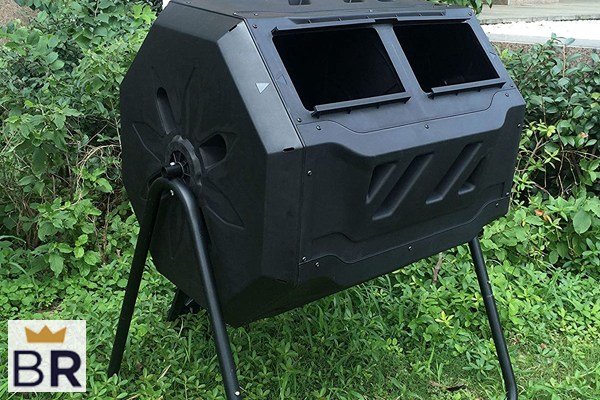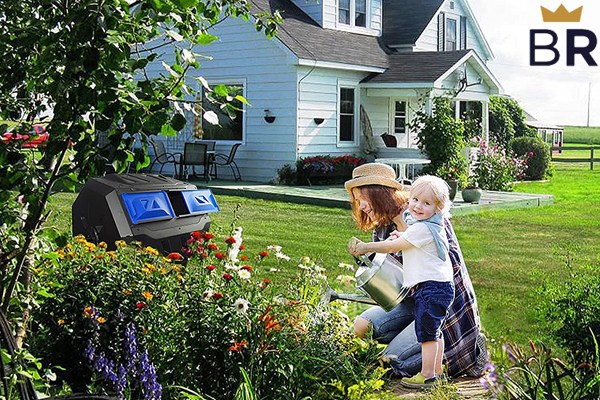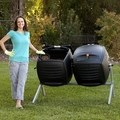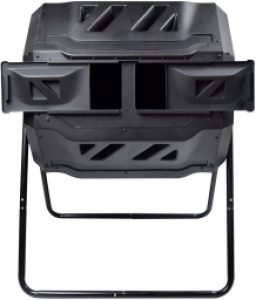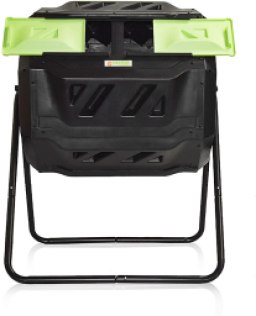Buying guide for Best garden composters
Quality compost is a valuable component in creating healthy soil. You can save money and help the environment by making your own compost out of garden waste and kitchen scraps, but to do so, you'll need a garden composter.
If you're new to the world of composting, deciding which composter to get can seem like an impossible task. Bin or tumbler? Metal or plastic? Round or square?
Operation
First, let's examine how garden composters work and how you use them:
Once you've situated your garden composter, the first step is to add the organic materials you want to compost.
Now, the bacteria get to work. Microbes break down plant matter and produce carbon dioxide and heat. The center of a compost pile can reach between 100°F and 140°F, at which point heat-loving bacteria get to work and further break down the material.
Bugs, such as worms and slugs, are your friends. They eat and excrete the material in your composter and help turn it into compost more quickly.
Turn your compost every three to seven days to increase the amount of oxygen the material is exposed to and speed up the composting process.
When the material has turned into brown, crumbly compost – which takes between three and 12 months – it's ready to use.
We consider the advantages and disadvantages of compost tumblers during our research. Compost tumblers make it easier to turn the compost, but they tend to be smaller and more expensive.
When we research garden composters, we compare the pros and cons of compost bins and compost tumblers. Bins cost less and tend to be larger, but it takes more work to turn the compost.
During our research, we want to know what material each garden composter is made of. The best garden composters tend to be made of sturdy plastic or metal.
We note each garden composter’s capacity in our research. Compost tumblers usually hold 30 to 80 gallons, while compost bins usually hold 60 to 250 gallons.
When we research garden composters, we look for the best options at different price points. Compost tumblers cost around $100, while compost bins can cost $50 to $200.
While most garden compost tumblers tend to be the same shape, compost bins may be round or square. Rounded compost bins are often easier to turn without compost getting stuck in corners.
We look for garden composters that are easy to assemble so you can set up and start composting right away.
Since proper ventilation is key to successful composting, we want to know if a garden composter has adjustable vents or other features that promote air circulation.
Composting material must be mixed or turned frequently to expose the material to oxygen. We look for garden composters that make this process as easy as possible.
Composting material must be mixed or turned frequently to expose the material to oxygen. We look for garden composters that make this process as easy as possible.
Why should you buy a garden composter?
If you're not 100% sold on the idea yet, here are a few reasons why you should own a garden composter:
Making your own compost is cheaper than buying it.
Composting is environmentally friendly, since you're recycling your own garden waste and certain kitchen scraps rather than sending it to a landfill.
Using compost reduces the need to use controversial chemical fertilizers.
When you compost your garden waste, you don't end up with overflowing trashcans come garbage day.
Compost generally improves soil quality and reduces toxins.
Types of garden composters
You can find two main varieties of garden composters on the market: compost tumblers and compost bins.
Compost tumblers
Compost tumblers sit on a frame so you can spin or rotate them to turn the compost inside.
Pros: Quickly and easily turns compost without using a fork, durable sealed construction lasts longer and speeds up the composting process, harder for pests (such as mice and raccoons) to access.
Cons: : Can be pricey, smaller capacity, can be hard to turn when almost full
Price: $100 for basic models; up to $400 for high-end models.
Did you know?
A compost tumbler makes composting much easier, as you don't need to turn your finishing compost by hand with a garden fork.
STAFF
BestReviews
Compost bins
Compost bins look like large square or round vats with open bottoms. The compost sits directly on the soil.
Pros: Large capacity, tend to cost less than compost tumblers, and excess moisture usually drains itself into the ground.
Cons: More work to turn the compost, easier access for pests, compost tends to take longer to be ready.
Price: Anywhere between about $50 and $200, depending on capacity and construction quality.
Considerations for selecting a garden composter
Ease of use
For most people, home composting is a chore rather than a hobby, so you want a garden composter that's relatively easy to use.
The tumbler is by far the easiest type of composter to use, since you simply have to crank a handle a few times to spin the drum and turn your compost.
Did you know?
Thanks to their heavy construction, compost tumblers are generally more durable than compost bins.
STAFF
BestReviews
Material
Most garden composters are made from either plastic, metal, or wood. Plastic and metal are better choices, as they're better at regulating the heat required for composting.
If you opt for a plastic composter, make sure it's sturdy enough, as flimsy plastics won't stand the test of time.
Capacity
The capacity of a garden composter dictates how much compost you can make at any one time. Compost tumblers tend to have smaller capacities, usually between 30 and 80 gallons. Compost bins have larger capacities, usually between 60 and 250 gallons.
Unless you have an extremely large garden or routinely peel vegetables to feed an army in the kitchen, something in the range of a 60- to 80-gallon capacity should be more than enough.
Shape
Shape isn't too much of an issue with compost tumblers, but if you choose a compost bin, you'll need to get in there with a garden fork to turn your compost.
In this case, it's easier to have a round bin rather than a square one, as unturned compost is more likely to get stuck in the corners.
Composting tips
Take note of these tips for composting success:
Garden composters require some degree of ventilation to help speed up the composting process.
Chopping the material you put in your compost bin into small pieces will help it break down faster.
Try not to let a single material dominate your compost pile. A good mixture is preferable.
Coffee grounds and tea bags (as long as the bags are made from paper) are excellent additions to your compost, so don't just throw them out.
If your compost smells bad, it most likely has too little air and too much moisture in it. Add dry ingredients, such as paper and wood chips, to compensate.
If your compost is too wet, add dry materials such as paper, cardboard, or woodchippings. If it's too dry, add a little water.
FAQ
Q. What can I put in my garden composter?
A. To create quality compost, you need to put in a roughly even amount of carbon-rich "brown" materials and nitrogen-rich "green" materials. Brown materials include wood prunings, dried leaves, crumpled paper, and pieces of cardboard. Green materials include grass clippings, uncooked fruit and vegetable scraps, green leaves, soft garden clippings, tea bags, and coffee grounds. Avoid putting any animal products (meat, dairy, etc.), cooked foods, leftovers, diseased plants, or animal feces in your garden composter.
Q. How long will it take for my compost to be ready?
A. The answer to this question will vary depending on a range of factors, such as the ratio of nitrogen to carbon, the type of garden composter you have, and how often you turn it. It can take anywhere from three to 12 months for your compost to be ready. Here's some advice from our expert gardening consultant: "Despite advertisements, even the best compost tumblers won’t give you compost in a matter of weeks. For beginners trying to understand how the composting method works, it can take months. And that’s fine, but it’s important to understand that many advertiser claims are exaggerated."
Q. How moist should my compost be?
A. Your compost pile should have a moisture content of about 40% to 60%. Too much or too little moisture affects microbial activity and slows down the composting process. It should feel moist but not wet to the touch – a bit like a wrung-out sponge.













